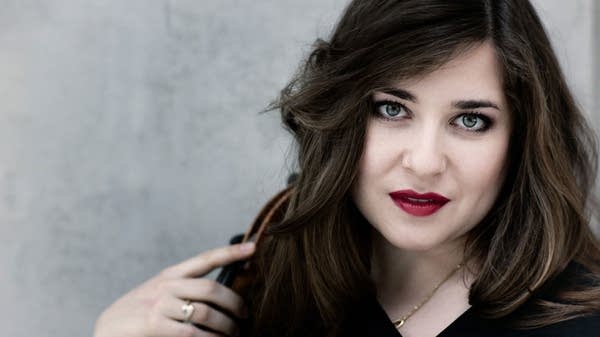Alisa Weilerstein / Inon Barnatan: Beethoven Cello Sonatas (Pentatone)
“It takes organization. But it is more than possible, and it's fantastic.”
That’s cellist Alisa Weilerstein talking about what it takes to integrate family with an active career.
About five months ago, she and her husband, conductor Rafael Payare, welcomed their second daughter, Elina, who joins big sister Ariadna.
But not only did Weilerstein expand her family during the global pandemic; she also created a new recording with her longtime musical partner, pianist Inon Barnonton: a collection of Ludwig van Beethoven’s cello sonatas.
The two of you have been playing these works for the entirety of your collaboration, which dates to 2008. Why was now the right time to make this recording?
“Nothing is like the Bach cello suites in terms of, let's say, people's reverence for them and the fear of putting one’s sort of permanent stamp on them. This comes close. And so the Beethoven sonatas were pieces that we didn't want to rush into recording.
2020, of course, was also supposed to be the big Beethoven year. And, obviously, that got a bit overshadowed by world events. I mean, we had been talking about doing it eventually. It's like, well, OK, now is the perfect time. Let's just do it. So we did.
It's the most visceral music I can think of. It combines some of the most structurally interesting and beautifully crafted music with primal, rhythmic drive and energy, which is present even in the most tender moments. When Beethoven becomes vulnerable, it's almost unbearable in terms of how moving, how touching it is.
One of the coolest things about Beethoven's sonatas for cello and piano is that in five fairly concise works, we get to hear how his relationship between the piano and cello was redefined. Can you talk about that evolution and how we hear it in these works?
“And I'm really glad you brought that up, because historically, in terms of our canon, it was a very important trajectory that we're following.
“The first two sonatas, the first one, in particular, are really more of piano and cello sonatas. In other words, the piano is really the main voice, and the cello is having a kind of obbligato voice. I'm just kind of floating around and the piano is just wailing away, basically.
“And then the Third Sonata is the first one where the cello and piano are truly equal partners. And it's announced from the very first note, which is played by the cello alone. That, historically, was a really big deal. It's fascinating to see how he just broke all the rules.
“This is like therapy, just to make music and to communicate these really profound ideas and emotions in a way that we didn't have to use our words for anything. We could just make music. And it was kind of a reminder of why we both do what we do and why we love what we do so much.”
To hear the rest of my conversation, click on the extended interview above, or download the extended podcast on iTunes or wherever you get your podcasts.
Resources
Alisa Weilerstein / Inon Barnatan — Beethoven Cello Sonatas (Weilerstein store)
Alisa Weilerstein / Inon Barnatan — Beethoven Cello Sonatas (Pentatone store)
Alisa Weilerstein / Inon Barnatan — Beethoven Cello Sonatas (Amazon)
Alisa Weilerstein (official site)
Inon Barnatan (official site)
Love the music?
Show your support by making a gift to YourClassical.
Each day, we’re here for you with thoughtful streams that set the tone for your day – not to mention the stories and programs that inspire you to new discovery and help you explore the music you love.
YourClassical is available for free, because we are listener-supported public media. Take a moment to make your gift today.
Your Donation
About New Classical Tracks®
Host Julie Amacher provides an in-depth exploration of a new classical music release each week.
Subscribe on Apple Podcasts, TuneIn, Radio Public, or RSS.











